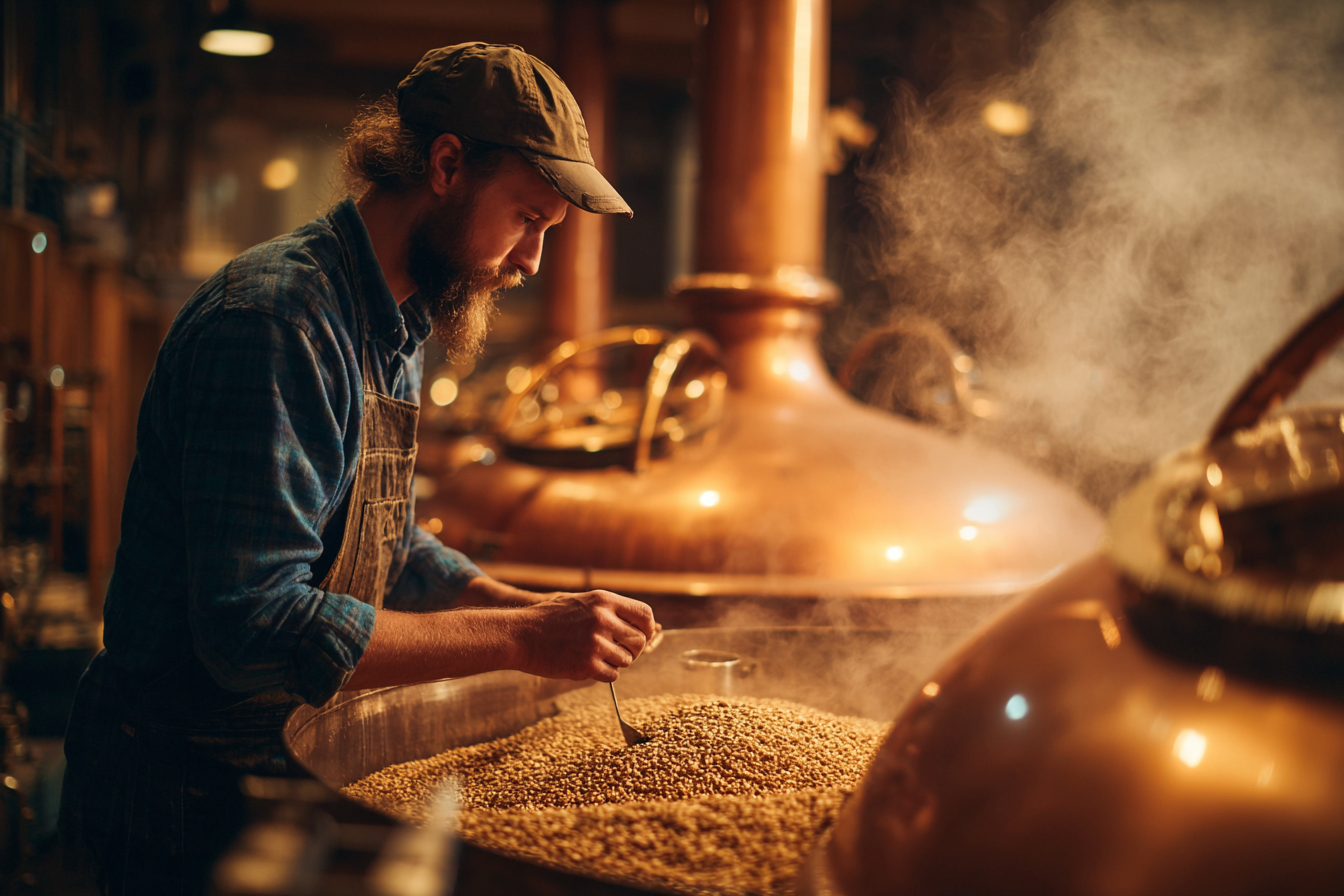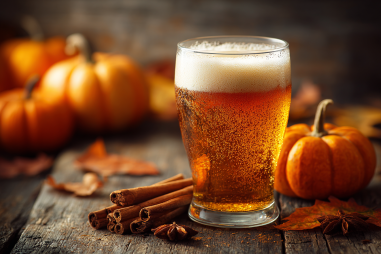Czech Dark Lager, known locally as “Černé pivo,” is a beloved beer style boasting a rich heritage and a distinct flavor profile that has been refined over centuries. Characterized by its deep amber to dark brown color, smooth maltiness, and balanced bitterness, this beer embodies the artisanal brewing traditions of the Czech Republic. What makes Czech Dark Lager stand out is not just its taste but also the meticulous brewing process that produces its unique qualities. From the careful malt selection to the exact fermentation techniques, every step influences the final character of the beer. In this article, we will take you on a detailed journey through the brewing process behind authentic Czech Dark Lager, shedding light on each stage, the traditional methods used, and tips for those interested in brewing it at home.
Overview of Czech Dark Lager Brewing
Czech Dark Lager is a sub-style of the classic lager family known for its medium body, rich malt aroma, and gentle hop bitterness. Unlike darker ales, Czech Dark Lager is brewed using lager yeast strains and cold fermentation methods, resulting in a clean, crisp finish. The beer typically pours a deep amber to dark brown hue, showcasing roasted malt flavors balanced by noble hops. This style is deeply rooted in Czech brewing traditions, dating back to the 19th century, and is often enjoyed alongside hearty Czech cuisine. Brewing this style requires precision, patience, and a keen understanding of both malt and hops to achieve its signature smoothness and depth.
Selection of Malt and Hops
The foundation of Czech Dark Lager lies in its selection of malt. Brewers primarily use a blend of base malts—such as Pilsner malt—to provide fermentable sugars and a light backbone. To achieve the dark color and roasted flavor, specialty malts like Caramel (or Crystal) malts and roasted malts such as Munich or Chocolate malt are incorporated. These malts imparts notes of caramel, toffee, bread crust, and subtle coffee undertones, crucial to the style. The malt bill is carefully balanced since overuse of roasted malts can introduce bitterness and harshness.
Hops play a secondary but critical role. Traditional Czech noble hops, such as Saaz, are the go-to variety. Known for their mild yet distinctive earthiness, floral aroma, and gentle bitterness, Saaz hops complement the malt sweetness without overpowering it. The hopping schedule usually involves a modest bittering addition at the start of the boil and aroma hops late in the process to preserve delicate hop character.
Mashing and Wort Preparation Specifics
The mashing process for Czech Dark Lager is tailored to extract maximum malt character while maintaining balance. Typically, a step mash or decoction mash method is employed, reflecting traditional Czech approaches. A decoction mash involves removing a portion of the mash, boiling it, and then returning it to the main mash to raise the temperature. This technique promotes Maillard reactions and enhances maltiness and color development in the wort.
The mash temperatures usually range between 62°C to 72°C (144°F to 162°F), encouraging the breakdown of starches into fermentable sugars as well as dextrins that contribute to body and mouthfeel. After mashing, the wort is lautered and sparged to extract sugars from the grain bed. Wort clarity is essential for lagers, so careful lautering and wort separation are conducted to avoid extracting harsh tannins.
Boiling the wort typically lasts 60 to 90 minutes, allowing for hop additions and wort sterilization. Because Czech Dark Lager emphasizes malt character, hop additions are restrained, focusing on balancing sweetness rather than aggressive bitterness.
Fermentation Details Unique to Dark Lagers
Fermentation is where Czech Dark Lager truly differentiates itself. This beer uses bottom-fermenting lager yeast strains, typically Saccharomyces pastorianus, which perform well at cooler temperatures. The initial fermentation occurs at temperatures between 7°C and 13°C (45°F to 55°F), which promotes slow, clean fermentation and the development of crisp, delicate flavors without fruity esters common in ales.
Fermentation is longer than ales, often lasting one to three weeks, depending on the brewer’s preferences and yeast strain. This slow process allows for proper attenuation, resulting in a dry yet smooth beer. After primary fermentation, a secondary maturation or lagering phase is crucial. During lagering, the beer is stored near freezing temperatures (around 0°C to 4°C or 32°F to 39°F) for several weeks or even months. This cold storage clarifies the beer by precipitating out proteins and yeast, refining flavors, and reducing unwanted compounds.
Conditioning and Maturation Techniques
Conditioning is vital to the traditional Czech Dark Lager experience. After fermentation, the beer undergoes maturation at low temperatures, allowing flavors to meld and mellow. This process can be done in stainless steel tanks, wooden barrels, or conditioning tanks depending on the brewery’s tradition. The extended cold maturation smooths the beer’s mouthfeel, reduces rough edges from roasted malts, and develops a clean finish.
Carbonation levels are generally moderate, achieved either naturally by adding priming sugar before packaging or via forced carbonation in tanks. Moderate carbonation enhances the creamy texture and balances malt sweetness without overshadowing the beer’s subtleties.
Many traditional Czech breweries still adhere to age-old methods, such as open fermentation or decoction mashing, which contribute greatly to the beer’s distinctive character and authenticity.
Quality Control and Traditional Methods
Maintaining the high standards of Czech Dark Lager requires stringent quality control at every stage. Breweries monitor parameters like yeast health, fermentation temperature, pH level, alcohol content, and bitterness to ensure consistency. Sensory evaluation by trained tasters is also common, ensuring the beer delivers the expected aroma, flavor, and mouthfeel.
Traditional brewing methods, passed down through generations, remain critical. Decoction mashing, the use of local noble hops, and cold lagering are pillars of authenticity. Many Czech brewers also source water with a specific mineral content, as the mineral profile influences the beer’s softness and hop perception.
Tips for Homebrewing Czech Dark Lager
If you’re interested in crafting your own Czech Dark Lager at home, here are some helpful tips to replicate the style:
- Use quality malts: Incorporate Pilsner malt as the base with small quantities of Caramel and Chocolate malt to achieve color and flavor without bitterness.
- Mash temperatures: Try a step mash or decoction mash if feasible; otherwise, maintain mash temperatures around 65-68°C (149-154°F) for good balance of fermentable sugars and body.
- Yeast choice: Select a clean lager yeast strain and ferment at low temperatures (around 12°C or 54°F) to avoid fruity esters.
- Lagering: Allow extended cold maturation of at least 4-6 weeks after fermentation to develop smoothness.
- Hops: Use noble hop varieties like Saaz with moderate additions for balanced bitterness and aroma.
- Water profile: Aim for soft water with low mineral content to match traditional Czech profiles.
Patience is key—this style demands time and careful temperature control, but the resulting beer is a rewarding tribute to Czech brewing heritage.
By understanding the meticulous process behind Czech Dark Lager, brewers and enthusiasts alike can better appreciate the craftsmanship it entails. Every stage, from malt selection through aging, plays a vital role in creating that characteristic malt sweetness balanced by delicate hops and a smooth, clean finish. Whether you’re savoring a bottle from a local Czech brewery or attempting your own batch at home, knowing the details behind this iconic beer enriches the experience.







